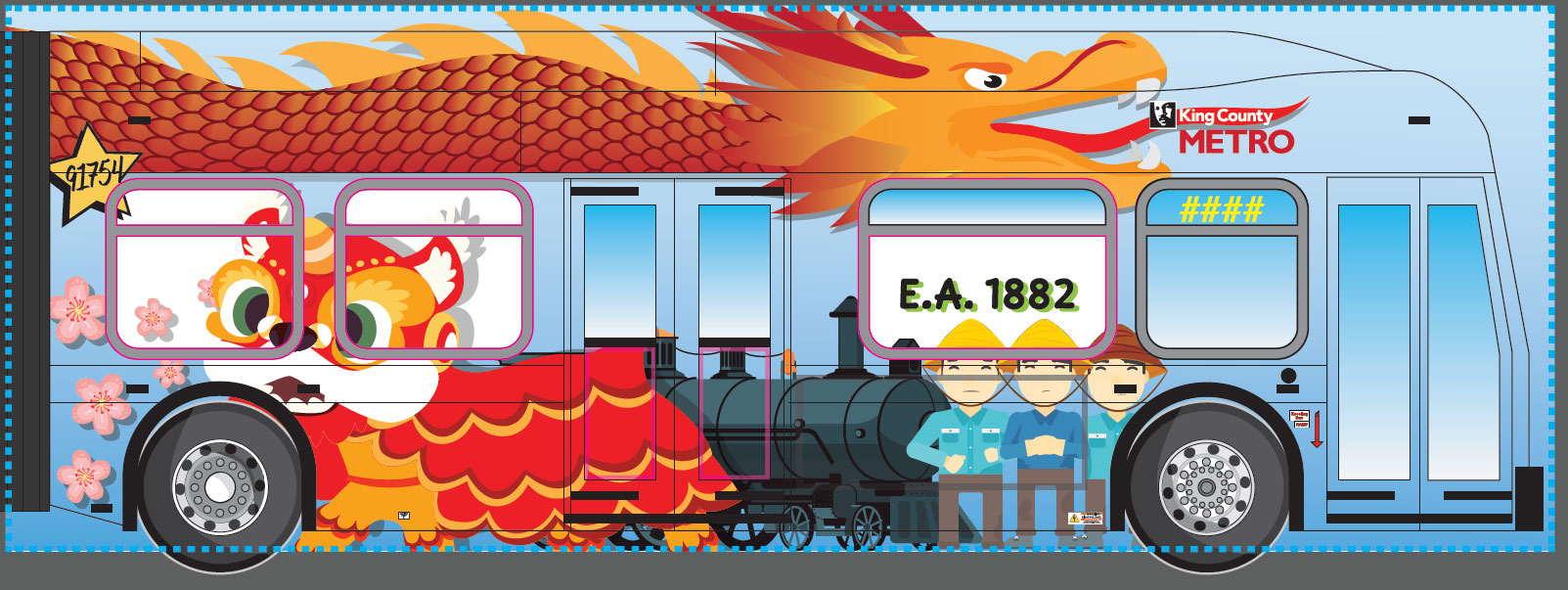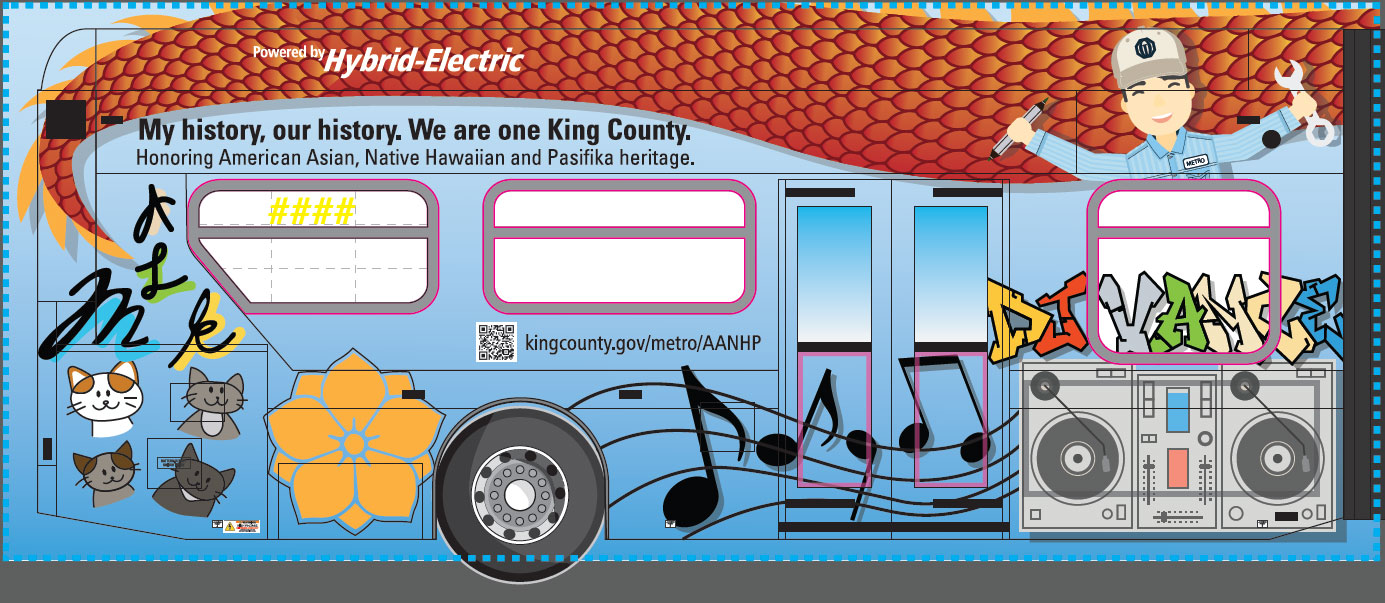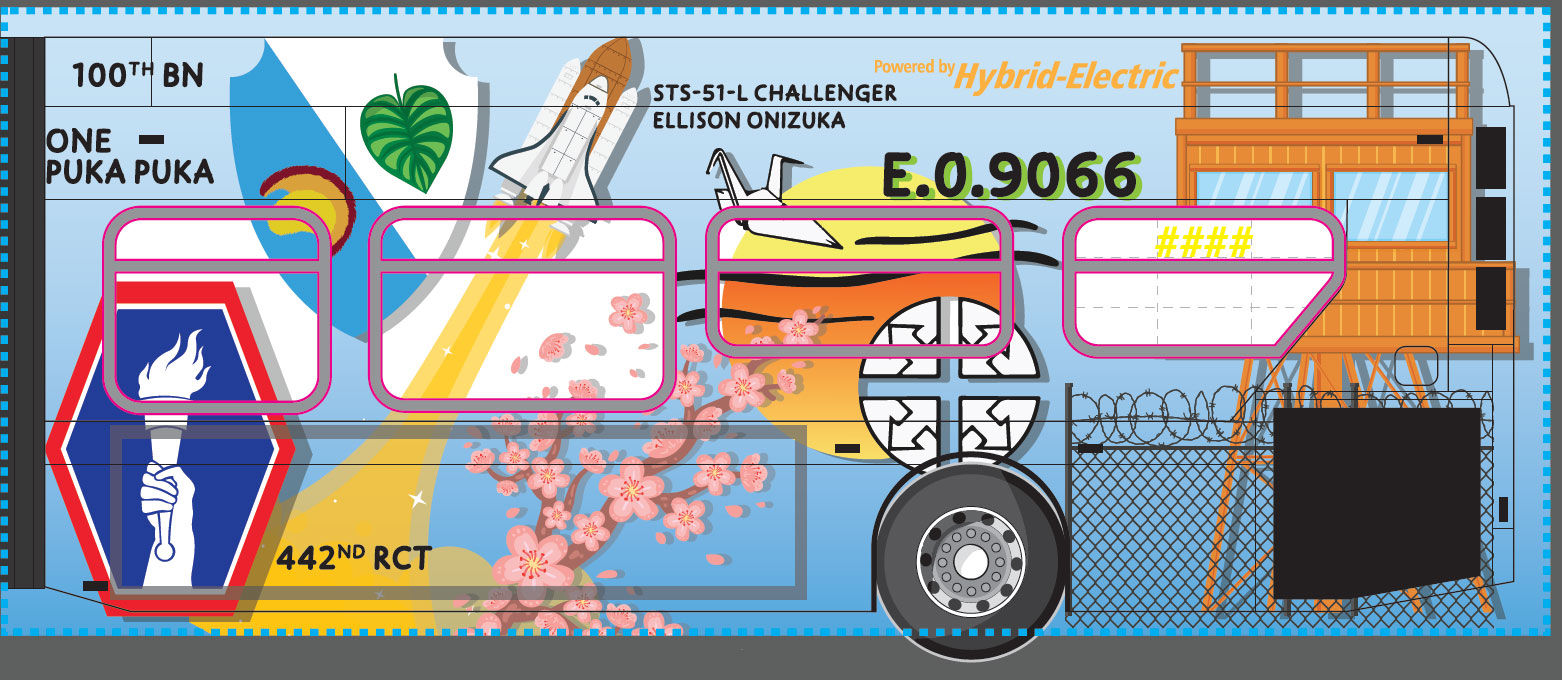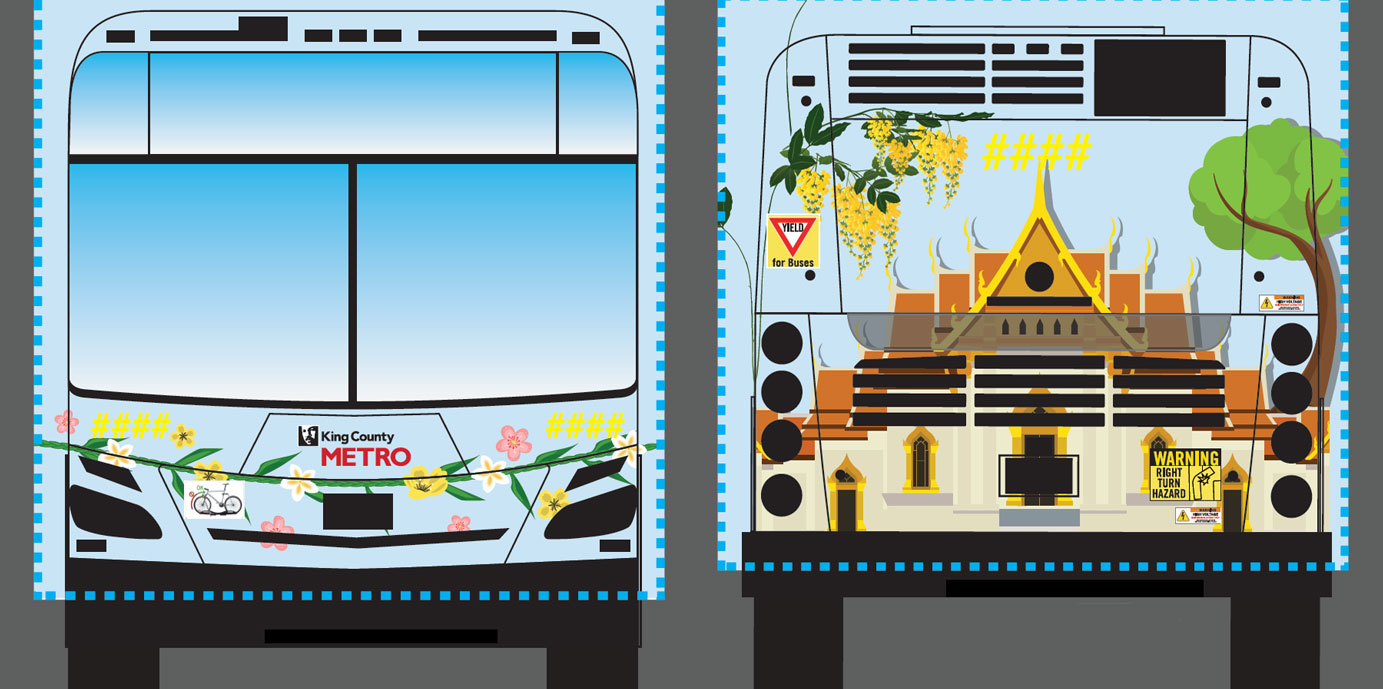AANHP Visibility Project
My history, Our history. We are one King County.
This project is part of King County’s Metro effort to make visible statements about its ongoing commitment to equity, inclusion, and belonging. In 2020, Metro unveiled employee artwork in response to the murder of George Floyd and other Black Americans, which included a bus wrap, an exterior bus card, and worksite art.
Recognizing that art provides an outlet for unity, hope, and resilience in the midst of struggle and pain, King County Metro solicited an internal call for artwork from employees to help us recognize the American Asian Native Hawaiian Pasifika (AAHNP) community and how they have shaped our region. The selected artwork is now featured on a bus wrap, a traveling art installation at Metro worksites, and at three bus shelters in downtown Seattle, including the Chinatown-International District (CID).
Project background
Over 20 percent of the population in King County identifies as American Asian, Native Hawaiian, Pasifika (AANHP)—one of the largest in the country. AANHP immigrants played a significant role in building Washington State's infrastructure, including railroads, mines, and fisheries. Yet, for generations, the AANHP community has faced legalized discrimination and racial hostility.
This was exemplified by the Chinese Exclusion Act (passed in 1882) and subsequent anti-Chinese riots in Seattle and Tacoma, and Alien land laws, which limited rights of Asians and other immigrants to own property and work in certain industries.
During World War II, thousands of Japanese Americans in Washington State were forcibly removed from their homes and incarcerated at the Puyallup Fairgrounds. More recently, the AANHP community was unfairly blamed and harassed during the COVID-19 pandemic and has suffered the devastating impact of mass shootings like the 2023 Star Ballroom tragedy in Monterey Park, California.
Metro’s hope is this artwork will serve as a public statement to increase visibility, stand in solidarity, and honor the AANHP community. Learn more about the different pieces of artwork and what inspired them below.
"Go for Broke"
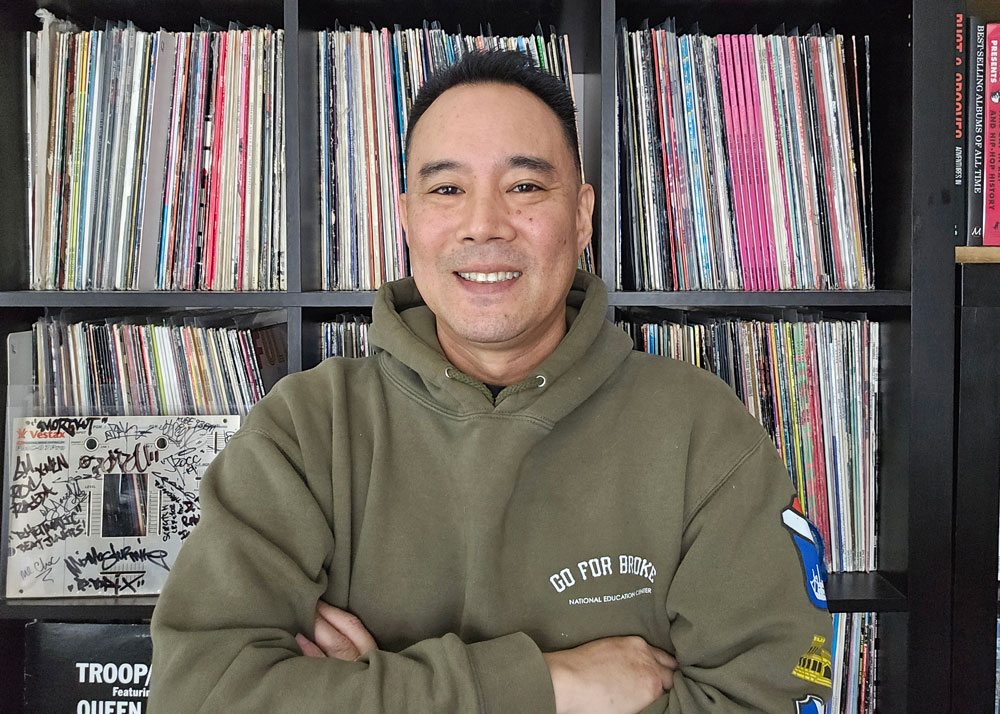
From the artist Vance Sakado
The artwork on the bus wrap tells a story deeply rooted in my family heritage and cultural identity. My father's side traces back to the Hawaiian Islands, and I proudly embrace my Japanese descent.
Through this artwork, I aim to depict the narrative of the Polynesian navigators who founded the Hawaiian Islands and cultivated its rich culture.
Additionally, I pay homage to the brave Japanese Americans who fought valiantly, even sacrificing their lives, to prove their loyalty to the United States (notably in the 442nd Regimental Combat Team and the 100th Infantry Battalion), despite enduring the injustice of being stripped of their rights and confinement to internment camps under Executive Order 9066.
I also honor the contributions of Chinese and Chinese Americans, who played pivotal roles in building our nation, despite facing exclusionary laws such as the Chinese Exclusion Act of 1882.
Ultimately, this artwork serves not only as a reflection of my personal journey but also as a tribute to the diverse tapestry of cultures and histories that make up the fabric of America.
Celebrating the Strengths of AANHP Moms

From the artists Linh Hoàng and Keiko Budech
This portrait series celebrates the strengths and unique stories of the mothers of American Asian, Native Hawaiian, and Pasifika (AANHP) employees at Metro.
Our aspiration for this art piece is to serve as a compelling reminder of the resilience and significance of AANHP moms. By showcasing their stories, we aim to challenge long-standing stereotypes and misconceptions that have hindered their recognition.
Let us fully acknowledge the invaluable contributions they make and embrace the immense power they possess.

Dragon Scales of the Beloved AANHP Diaspora
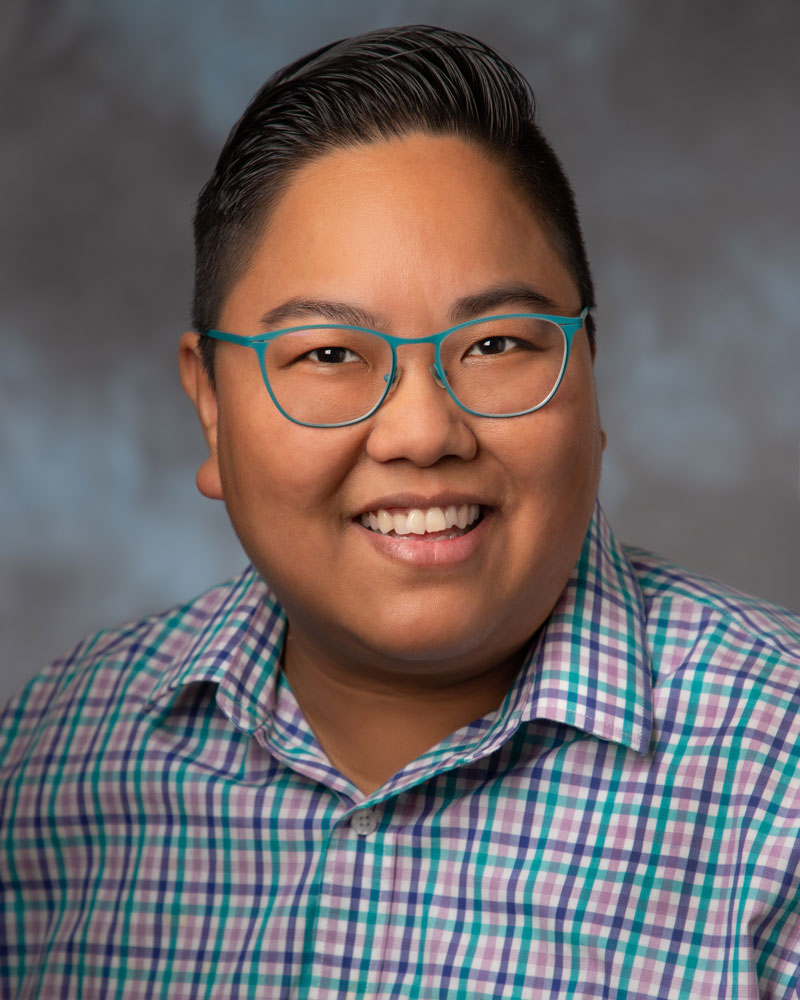
From the artist Wan-Lin Tsou
I was moved to create this artwork after meeting a couple who were affected by the tragic Monterey Park shootings. The victims were all from AANHP heritage and I felt that we needed a more positive representation of our community.
My artwork expresses, respects and honors the resiliency, solidarity, tapestry and contributions of the AANHP community by highlighting 20 different AANHP countries with their foods, cultural patterns and famous landmarks. It represents the different facets of a large AANHP diaspora.
Looking ahead
Metro is committed to launching annual art initiatives that highlight and bring visibility to communities where needs are greatest.
Our hope is that this artwork can provide a starting point for healing, connection, and meaningful conversations that foster empathy and inspire positive change.
 Translate
Translate

